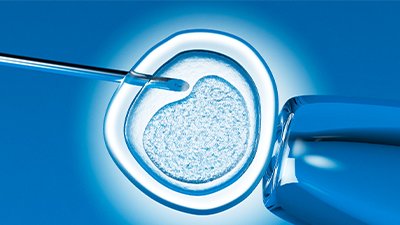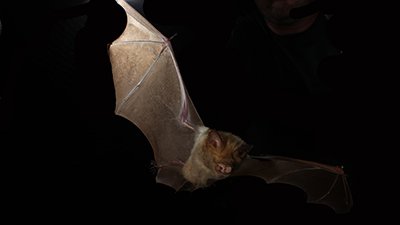
Does Evolution Keep Making Crabs?
I recently saw a headline that caught my attention titled, “Crabs Aren’t The Only Thing Evolution Keeps Making. An Expert Explains.” Now what is such a statement supposed to mean? Well, the article is looking at the evolutionary question of the limits of biological evolution. Can it create “endless forms most beautiful” or are there limits? Well, my answer to this probably won’t surprise you (spoiler: evolution hasn’t created anything!)—but the answers from the experts quoted in that article might!
Okay, so why crabs? Well, as the article explains,
While there doesn’t seem to be a ceiling on the number of species that might evolve, there may be restraints on how many fundamental forms those species can evolve into. The evolution of crab-like creatures may be one of the best examples of this, since they have evolved not just once but at least five times.
So the body plan that we think of when we picture a crab supposedly evolved five times. And that’s far from the only example of the same feature supposedly evolving multiple times. The article says,
There are two major groups of living mammals. The placentals (including us) and the marsupials (pouched mammals who give birth to tiny young). Both groups evolved from the same common ancestor over 100 million years ago, the marsupials largely in Australasia and the Americas and the placentals elsewhere.
This isolation led to two almost independent runs of the “experiment” to see what could be done with the mammal bodyplan [sic]. There are marsupial and placental versions of moles, mice, anteaters, gliders, and cats. There was even a marsupial wolf (the thylacine, extinct in 1936), whose skull and teeth match those of the placental wolf in astonishing detail. . . .
Eyes more generally may have evolved independently up to 40 times in different groups of animals. . . .
Structures such as jaws, teeth, ears, fins, legs and wings all keep evolving independently across the animal tree of life.
More recently, scientists discovered convergence also happens at the molecular level. The opsin molecules in eyes that convert photons of light into chemical energy and enable humans to see have a tight resemblance to those in box jellyfish, and evolved that way in parallel.
Even more bizarrely, animals as different as whales and bats have striking convergence in the genes that enable them to echolocate.
In other words, the crab body plan evolved five times; moles, mice, anteaters, gliders, cats, and wolves evolved twice; eyes evolved forty times; jaws, teeth, ears, fins, legs, and wings evolved multiple times; and certain molecular structures evolved more than once, as did certain genes. Whew! Evolution has been busy! (Not!) These evolutionists are actually experiencing the wonder of the creative hand of the infinite Creator God.
It boggles the imagination that a mindless process of random chance could produce something as complex as sight . . . once—multiply that by forty, and it’s just utterly absurd! And yet evolutionists must believe this happened if they’re going to hold on to their ideas about a tree of life going back to a universal common ancestor. It really is a good example of Romans 1:20–23:
For his invisible attributes, namely, his eternal power and divine nature, have been clearly perceived, ever since the creation of the world, in the things that have been made. So they are without excuse. For although they knew God, they did not honor him as God or give thanks to him, but they became futile in their thinking, and their foolish hearts were darkened. Claiming to be wise, they became fools, and exchanged the glory of the immortal God for images resembling mortal man and birds and animals and creeping things.
These original kinds had the eyes, ears, legs, and wings they needed, and they’ve continued to pass those along to their offspring.
Of course, in a biblical worldview, we don’t need to believe that somehow eyes evolved forty times. We understand that God created a very wide variety of creatures according to their kinds. These original kinds had the eyes, ears, legs, and wings they needed, and they’ve continued to pass those along to their offspring.
The reason we see similarities in unrelated groups has nothing to do with convergent evolution. It has everything to do with God creating kinds and, like any great engineer, using similar designs across multiple groups so each kind can survive and thrive in a variety of ecosystems.
Get More Answers on Answers News
This item was discussed today on Answers News with cohosts Dr. Gabriela Haynes, Bodie Hodge, and Rob Webb. Answers News is our weekly news program filmed live before a studio audience here at the Creation Museum and broadcast on my Facebook page and the Answers in Genesis Facebook page. We also covered the following topics:
- Where does atheist grant money go?
- Need a wheelchair ramp? Canada offers suicide instead.
- Is the y chromosome slowly vanishing?
- And more!
Be sure to join us each Monday at 2 p.m. (ET) on my Facebook page or the Answers in Genesis Facebook page for Answers News. You won’t want to miss this unique news program that gives science and culture news from a distinctly biblical and Christian perspective.
Thanks for stopping by and thanks for praying,
Ken
This item was written with the assistance of AiG’s research team.
Most Recent News
-
May 6, 2024 from Ken Ham Blog
A recent news item looked at IVF, abortion, and eugenics in connection with the recent Alabama Supreme Court case.
-
May 2, 2024 from Ken Ham Blog
A recent news article sported the bold claim that evolution in action was recently observed in island bats.

Answers in Genesis is an apologetics ministry, dedicated to helping Christians defend their faith and proclaim the good news of Jesus Christ.
- Customer Service 800.778.3390
- © 2024 Answers in Genesis



